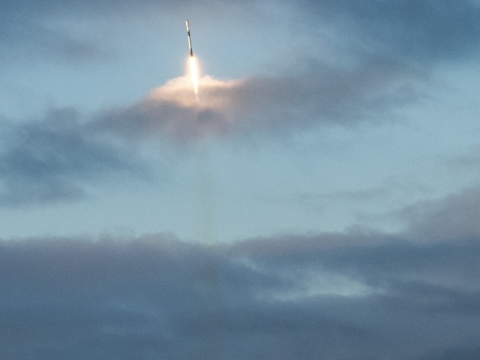On Point: Q&A With Srini Iyer
Srini Iyer is the chief technology officer and head of ManTech’s Innovation & Capabilities Office.
Q. How can the military secure data at the edge to ensure reliability?
A. Most of our troops operate in a delayed, disconnected, intermittently connected, limited bandwidth environment. Having access to real-time data and the ability to run complex analytics on this data will give our troops a huge advantage. The approach developed by our Innovation & Capabilities Office is one successful method. We call it D@tE—for Data at the Edge. We can now run complex analytics at the edge, provide the ability to store and process data at the edge, and more importantly, operate in a disconnected mode without network connectivity. We use multiple techniques to protect the raw data and actionable intelligence—from end-to-end encryption to implementing zero trust architecture. It requires the ability to authenticate each user and end-user device based on pre-set policies.
Q. Where will artificial intelligence have the greatest impact in the short term (five years)?
A. Several areas of artificial intelligence (AI) and machine learning (ML) that look promising include: deep learning or AI-enabled offensive cyber weapons; autonomous drones; and applications in command and control, logistics and ISR [intelligence, surveillance and reconnaissance]. One area of growing interest in AI is the ability to send data from sensor to shooter, directly from machine-to-machine at speed, traversing multiple domains. This could drastically reduce the kill chain down to a few seconds. This capability will require a complex web of technologies that include AI/ML, neural networks and computer vision.
Q. What must the U.S. do to ensure that 5G is not compromised by China and can be used by our military?
A. China’s 5G network infrastructure is in use all over the world. We need to take a very calculated and risk-based approach to ensure confidentiality, integrity and availability of our 5G networks. Alternatively, we need to take the 5G battle to China by leveraging of 5G’s current strengths and weaknesses and thinking ahead. A strength: 5G devices fitted with SIM [subscriber identity module] cards encrypt each device’s IMSI [international mobile subscriber identity] number—an effective deterrent to hacking. A weakness: 5G MIMO [multiple input/multiple output] signal channeling thwarts “direction of arrival” monitoring, but applying advanced blind mobile location augmented by ray tracing and Sequential Monte Carlo intensity filters fixes that issue. Finally, start working on 6G now—China is.
Q. Other than AI, what offers the best hope for speeding up the processing of intelligence data into knowledge?
A. A number of variables determine the best methodology: data type, data source, data format and so forth. Data curation plays a big role in how the data is ingested, processed and presented. While AI/ML offer data-driven automation, complementary techniques like robotic process automation provide process-driven automation. Both can be used in parallel to achieve the best results.
Q. What do you think is the next great technology trend?
A. Current encryption technology (AES 256) is more than 20 years old. While quantum computing is still in its infancy, it offers the promise of providing better security and encryption technologies. We will be seeing more innovations in the next few years in the areas of post-quantum cryptography, quantum key distribution and homomorphic encryption.




Comments